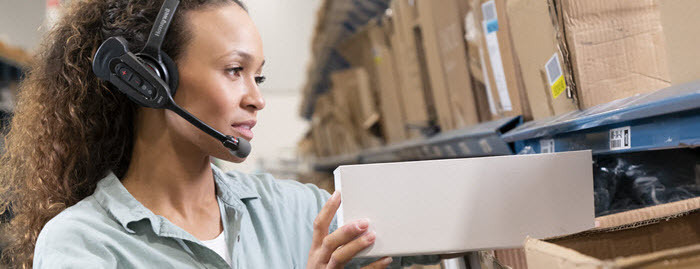Recognize and process incoming documents automatically with your logistics software
23 Feb 2023
5 min read
The rise of artificial intelligence (AI) is inevitable. Where a few years ago, we could only guess the practical use of AI. Nowadays, whole texts are written with the help of AI programs like ChatGPT. And AI offers solutions for your logistics processes too. Maybe not by generating texts but definitely by recognizing them. In an earlier blog, we already wrote about the renewed Document Capture module, with which you can capture documents into your system using AI. In this (self-written!) blog, we share more ways in which you can successfully put AI to use in your logistic operation.
From Document Capture to Form Recognition
Before diving deeper into the new module, let’s start with the name. From now on, we no longer call the new solution Document Capture. Instead, we will name it Form Recognition. As you might notice, this name is based on the Azure Function that we use. And it immediately says more about the possibilities it offers: processing all documents with a structured form (‘forms’). A powerful addition to the existing Document Capture Essentials module, which can add attachments based on barcode recognition.
Applying Form Recognition
In your logistics process, you have to deal with a wide diversity of incoming documents. The incoming invoices alone are different for each supplier. This is complex for OCR software. However, AI-based Form Recognition can learn and therefore deal with these different documents better each time it is used.
Purchase invoices
Following up on the example above, the most obvious application of Form Recognition is recognizing purchase invoices. This not only allows recognition of global information (supplier, total amount, etc.) but also recognition of the lines. And, recognition of invoices that you receive digitally or are already scanned. The purchase invoice will automatically be created for you in your software and you only have to do a final check. That is how you can save a lot of time in your process when using Form Recognition.
Automatic processing of purchase invoices
Though the recognition of the invoice content may already sound complicated, in reality, that is not even half the work. The real complexity lies in applying the data found on the invoice. Because in the end, you want to automize processing all of the purchase order lines completely. That is how you really save time.
A rather simple automation is to capture the lines automatically on a fixed general ledger account. More advanced is when the account depends on the supplier. And another step further is when your solution automatically recognizes services. This is already more complex as services have their own booking settings, which gives more room for variation in ledger accounts, cost centers, and dimensions. The most advanced automation is the complete integration of your filing process. It is possible to automatically link the purchase invoice lines to a cost rule in your FMS file. In this way, you enhance your control over the result and reservations in the file.
A hard condition for applying Form Recognition in this way is that data on the invoice suffices. In addition, your administration must be prepared to handle it correctly. For example, cost line recognition only works if these lines match the files they must be transferred to.
Recognition from NOAs to Customs documents
Besides purchase invoices, Form Recognition can automatically recognize and process all types of other documents in your software. In your processes, it is likely that you determine what file or order it must be attached to based on the contents of the PDF file. After which the order can be put through to the next status. In similar workflows, multiple customers already process Notices of Arrival (NOAs) or other Customs documents (EX A) automatically with the help of Form Recognition.
In addition, there are already several requests for other documents from customs, the NVWA, and forms used in (air)ports. In other words, while you are reading this, new models are trained and released. All to help you process incoming documents without a glance.
Is Form Recognition an answer for everything?
The simple answer? Yes! Form Recognition can be applied in many different situations. And yes, the recognition of the fields goes smoothly in over 99% of the cases. However, Form Recognition is not always the most efficient solution for your operation.
Digitalize communications – also without AI
Despite the success rate of Form Recognition, sometimes other ways may be a better match than AI or form recognition software. For example, for that supplier who sends you only four invoices a year and for which you have a specific administrative flow. Your financial employee easily processes this invoice in ten minutes. While a standardized solution may cost you two days of programming.
Or, think of the supplier that sends you multiple invoices a week. Maybe he can send these invoices via UBL or XML? The same goes for your customer that sends his orders in well-structured PDF files. Maybe he can provide the same order via CSV or XML?
For these types of customers and suppliers, communicating via EDI (or API) might be more efficient. This may sound more complicated than text recognition but it can reduce a lot of misunderstandings too. If so, then we gladly help you realize this integration!







